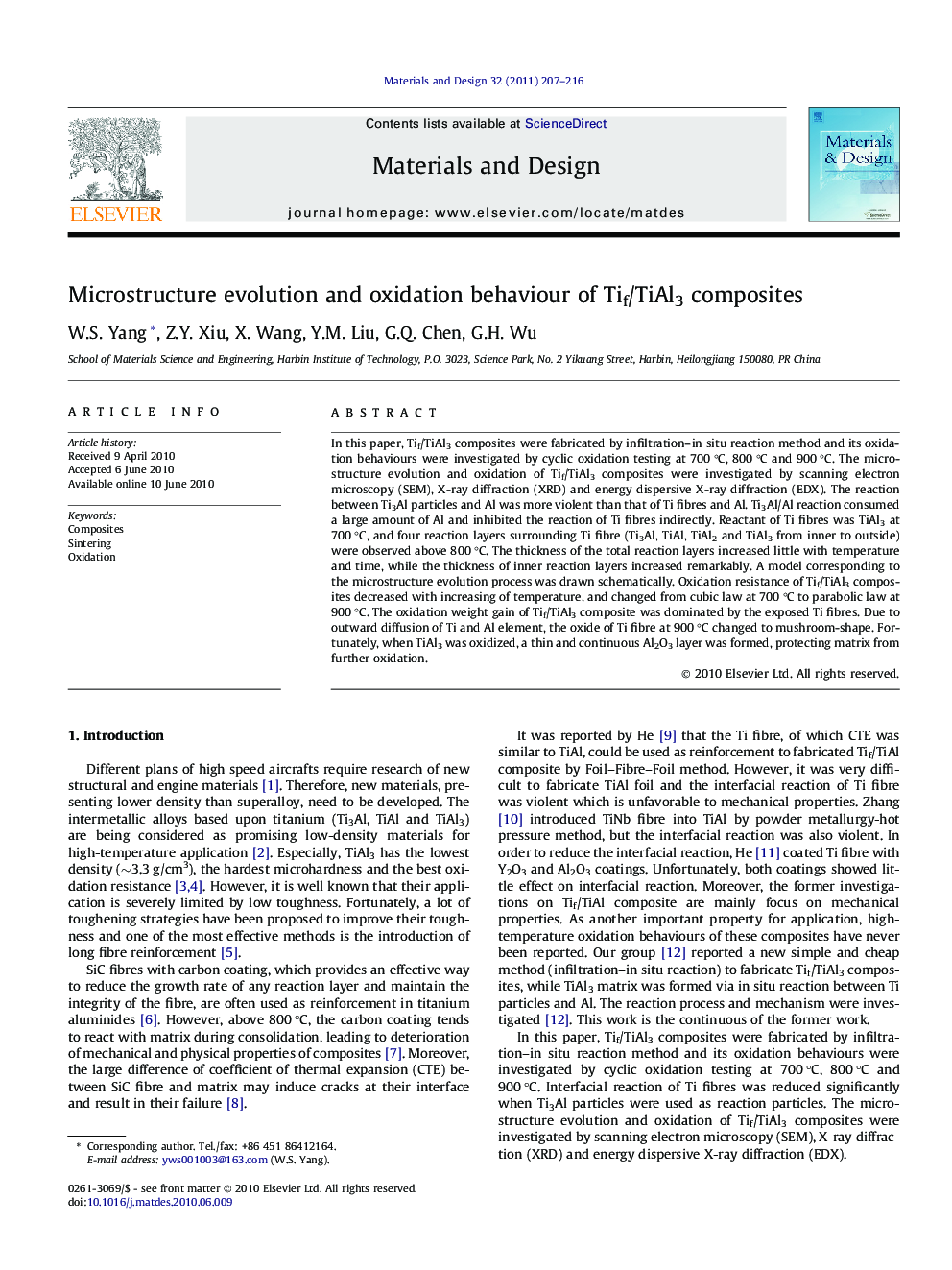| Article ID | Journal | Published Year | Pages | File Type |
|---|---|---|---|---|
| 831713 | Materials & Design (1980-2015) | 2011 | 10 Pages |
In this paper, Tif/TiAl3 composites were fabricated by infiltration–in situ reaction method and its oxidation behaviours were investigated by cyclic oxidation testing at 700 °C, 800 °C and 900 °C. The microstructure evolution and oxidation of Tif/TiAl3 composites were investigated by scanning electron microscopy (SEM), X-ray diffraction (XRD) and energy dispersive X-ray diffraction (EDX). The reaction between Ti3Al particles and Al was more violent than that of Ti fibres and Al. Ti3Al/Al reaction consumed a large amount of Al and inhibited the reaction of Ti fibres indirectly. Reactant of Ti fibres was TiAl3 at 700 °C, and four reaction layers surrounding Ti fibre (Ti3Al, TiAl, TiAl2 and TiAl3 from inner to outside) were observed above 800 °C. The thickness of the total reaction layers increased little with temperature and time, while the thickness of inner reaction layers increased remarkably. A model corresponding to the microstructure evolution process was drawn schematically. Oxidation resistance of Tif/TiAl3 composites decreased with increasing of temperature, and changed from cubic law at 700 °C to parabolic law at 900 °C. The oxidation weight gain of Tif/TiAl3 composite was dominated by the exposed Ti fibres. Due to outward diffusion of Ti and Al element, the oxide of Ti fibre at 900 °C changed to mushroom-shape. Fortunately, when TiAl3 was oxidized, a thin and continuous Al2O3 layer was formed, protecting matrix from further oxidation.
